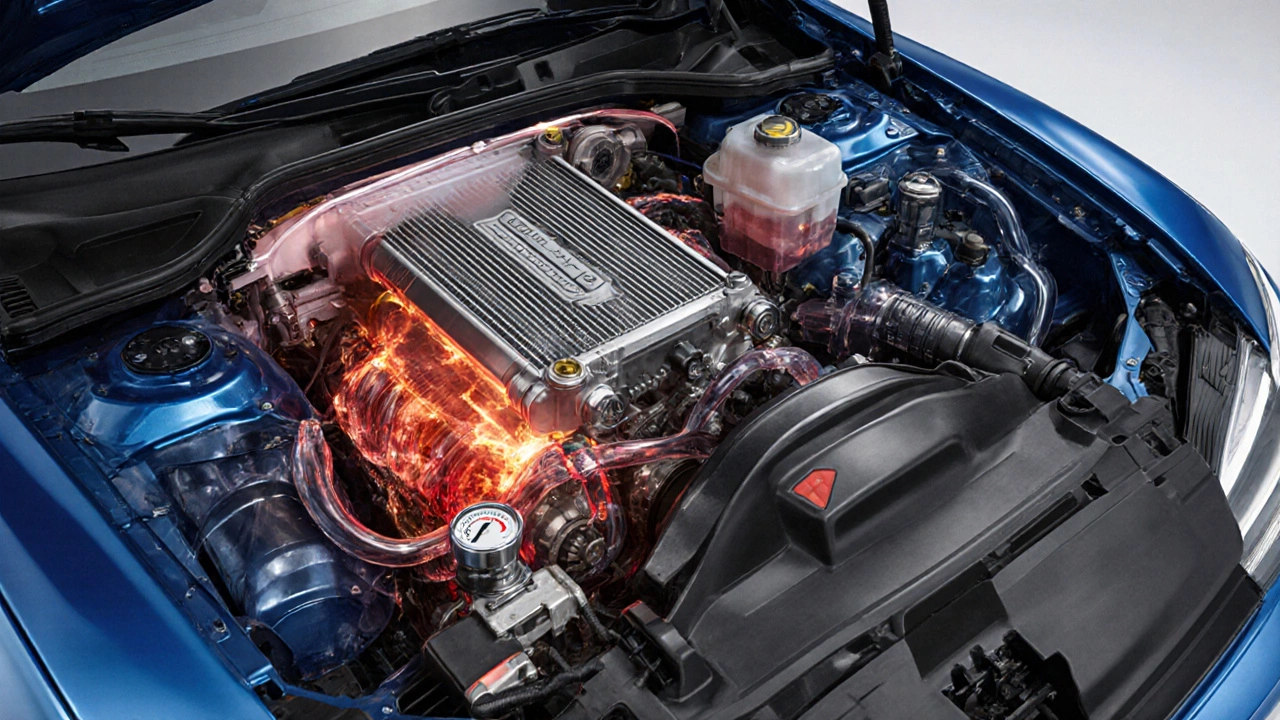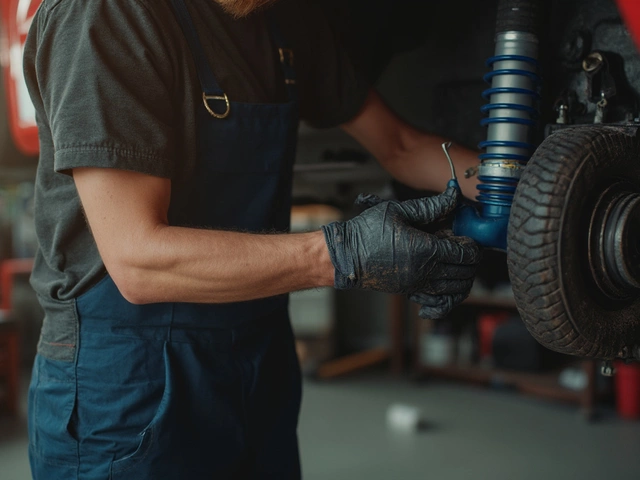Coolant System Basics & Maintenance
When working with coolant system, the network of parts that keeps your engine at the right temperature. Also known as the cooling circuit, it pulls heat away from the engine and releases it through the radiator, a heat‑exchanger that turns hot coolant into cooler fluid, mixes it with engine coolant, a specially formulated liquid that transfers heat efficiently, and regulates flow using a thermostat, a valve that opens and closes based on temperature. A cooling fan, an electric or belt‑driven fan that pushes air through the radiator helps when the car isn’t moving fast enough for airflow.
A healthy coolant system prevents engine overheating, which can warp heads or destroy pistons. The radiator acts like a giant radiator in your house – it transfers heat from the hot liquid to the air. If the radiator core clogs, heat can’t escape, and the thermostat may stay closed, causing the engine to run hot. Regularly checking the engine coolant level and its condition—looking for discoloration or debris—lets you spot contamination early. Most experts recommend a coolant flush every 30,000 miles or every two years, because fresh fluid maintains its boiling point and corrosion inhibitors.
Typical warning signs include a rising temperature gauge, steam from the hood, or a sweet smell inside the cabin. When you notice these, inspect the radiator hose for cracks, verify that the cooling fan engages on hot start, and test the thermostat by feeling the upper hose after the engine warms up. If the coolant looks milky, it could indicate a head gasket leak – a serious issue that ties directly back to the coolant system’s integrity. Replacing a faulty radiator or thermostat usually costs a few hundred pounds, while a full coolant system overhaul can run higher, depending on labour and part quality. Our guide collection below dives into exact pricing, DIY steps, and when to call a professional.
Beyond the core parts, the coolant system relies on smaller pieces like the pressure cap, expansion tank, and bypass hoses. The pressure cap maintains a set pressure (typically 15‑16 psi) which raises the coolant’s boiling point, allowing the engine to run hotter without boiling over. The expansion tank gives the system room to accommodate fluid expansion when it heats up. Bypass hoses route a portion of coolant directly back to the engine, ensuring quick temperature stabilization after a cold start. Ignoring these accessories can lead to pressure loss, air pockets, and persistent overheating. Simple checks – like listening for hissing at the cap or inspecting the tank for cracks – can save you costly repairs later.
When it comes to choosing the right fluid, you’ll see terms like “long‑life,” “extended‑life,” or “Dex‑cool” tossed around. Long‑life coolants contain organic acid technology (OAT) that protects metal surfaces for up to five years, while traditional green coolants use inorganic salts and need more frequent changes. Mixing different coolant types can cause gel formation, which clogs the radiator and reduces heat transfer. For most modern cars, follow the manufacturer’s recommendation – usually printed in the owner’s manual or on the radiator cap. If you’re unsure, a quick call to a local garage can confirm the correct formulation for your make and model.
While many owners handle basic checks and flushes themselves, a professional service can catch hidden problems like a failing water pump or a cracked radiator core. At Northwich Tyres Centre we offer comprehensive coolant system inspections, pressure tests, and complete fits of radiators, thermostats, and fans. Our technicians use genuine parts and can advise whether a simple top‑up or a full system replacement is the right move for your vehicle.
Explore Our Coolant System Articles
Below you’ll find a curated list of articles that break down radiator costs, coolant flush steps, thermostat swaps, and other key topics to keep your vehicle running cool.
 8 October 2025
8 October 2025
Running a Car with a Bad Radiator: Risks, Signs & What to Do
Learn if a car can run with a bad radiator, spot the warning signs, take emergency steps, and know when to repair or replace the radiator for safe driving.
Latest Posts
-

What to Do After Replacing Suspension: Keep Your Ride Smooth
-

Does a MERV 13 Air Filter Harm Your AC? Pros, Cons, and Real-World Tips
-

How Long Does a Clutch Last After You Smell It Burn? Real-World Lifespan and Advice
-

Understanding Car Tire Costs and What Influences Price
-

Signs Your Brake Pads Need Replacement: A Comprehensive Guide

0